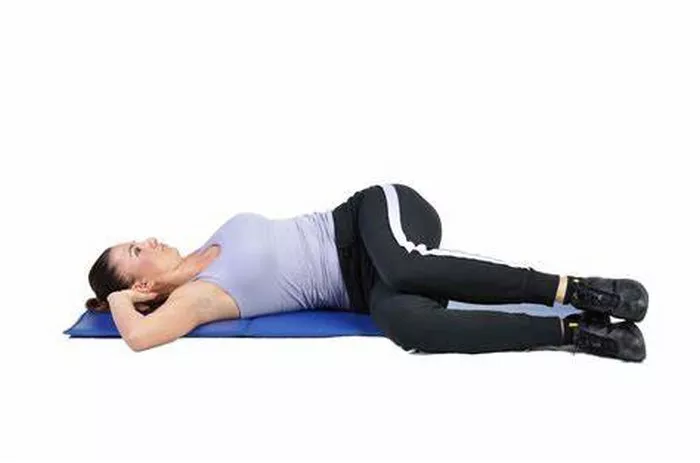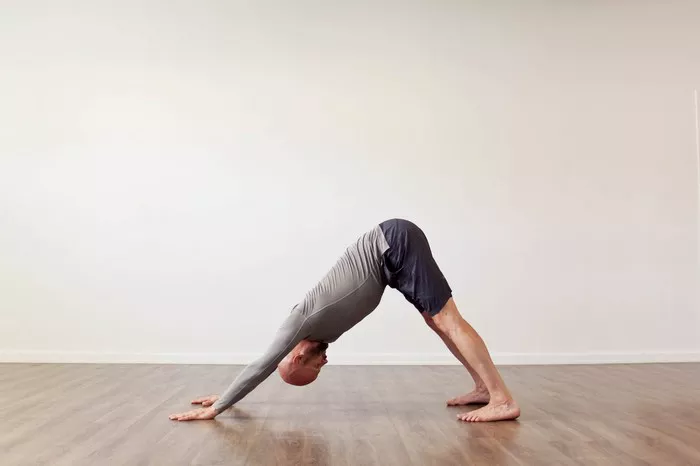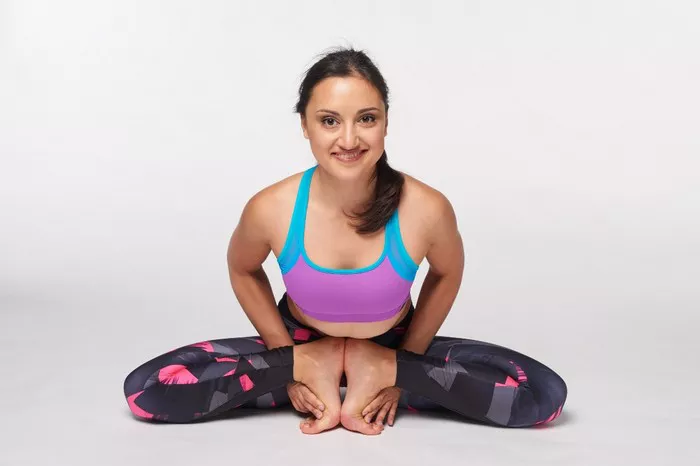Aerial yoga, an innovative and invigorating form of exercise, has rapidly gained popularity in recent years. This unique style of yoga combines traditional yoga poses with the use of a hammock or silk fabric suspended from the ceiling. The hammock helps support the body, allowing practitioners to explore deeper stretches, inversions, and unique postures that might not be possible on a traditional yoga mat. Aerial yoga provides benefits like improved strength, flexibility, and mental clarity while being accessible to people of all fitness levels. However, like any form of exercise, aerial yoga comes with its own challenges, and the difficulty can vary greatly depending on one’s physical ability, experience, and familiarity with the practice.
In this article, we’ll explore how difficult aerial yoga is, breaking down the factors that influence its difficulty, the challenges beginners face, and the benefits that can be gained from this aerial practice. We’ll also answer some common questions and offer insights into what you can expect when practicing aerial yoga.
What Is Aerial Yoga?
Aerial yoga, also known as antigravity yoga, is a type of exercise that combines traditional yoga with elements of pilates, dance, and acrobatics. The primary equipment used in aerial yoga is a hammock made of strong, silky fabric that is suspended from the ceiling. This hammock supports the body, enabling practitioners to perform various yoga poses while suspended in the air. The hammock acts as both a prop for assistance and a tool to deepen stretches and poses, particularly inversions.
In aerial yoga classes, practitioners perform traditional poses such as downward dog, warrior, and plank, but they do so with the support of the hammock, which can help release tension and improve alignment. The practice also includes inversions, where the body is turned upside down, which is believed to have numerous health benefits, including improved circulation and stress relief.
The Difficulty of Aerial Yoga
The difficulty level of aerial yoga depends on various factors, including an individual’s fitness level, body awareness, strength, and experience with yoga in general. The most common question among people considering aerial yoga is, “How hard is it?” The answer varies from person to person, but there are several elements to consider when assessing the challenge of aerial yoga.
1. Physical Strength
Aerial yoga requires a certain level of physical strength, especially in the upper body and core. Holding your body weight while suspended in the hammock can be challenging for beginners. Many aerial yoga poses require strong arm and shoulder muscles to maintain proper posture, especially during inversions and while moving through different transitions. Core strength is also critical, as the abdominal muscles play a key role in stabilizing the body during aerial poses.
While aerial yoga is designed to help you build strength over time, it can be difficult for those who are not used to engaging these muscle groups. Beginners may initially find it challenging to hold poses for extended periods, and transitions from one pose to another may seem awkward or difficult.
2. Flexibility
Flexibility is another important factor in aerial yoga. Many aerial yoga poses require the ability to bend and stretch deeply, particularly in the hips, legs, and spine. If you are already flexible, you may find that aerial yoga helps you deepen your stretches even further. However, if you are not very flexible, it might take time to adjust to some of the more advanced poses.
The hammock can help support you in poses where flexibility is needed, allowing you to relax into the stretch without worrying about balancing. However, some poses, especially inversions, can feel more challenging if you lack the flexibility in your hamstrings, hips, or lower back.
3. Body Awareness
Aerial yoga requires a good amount of body awareness, as you need to understand how to engage and move your body correctly while suspended in the air. This includes knowing how to distribute your weight properly, how to shift your center of gravity, and how to use the hammock to assist or deepen your stretches. For beginners, this can be difficult, especially since the sensation of being suspended may feel disorienting at first.
As you practice more, you’ll become more comfortable with these movements and develop better body awareness, making it easier to execute the poses effectively. However, at first, it might take time to adapt to the sensation of being lifted off the ground, and some people may initially feel unsteady or nervous.
4. Fear of Inversions
Inversions—poses where you are flipped upside down—are one of the most unique aspects of aerial yoga. While these inversions are not mandatory, many aerial yoga classes include them, as they are believed to have numerous health benefits such as improving circulation and reducing stress.
For those who are not used to being upside down, inversions can be intimidating. The sensation of being suspended in the air and having your head below your heart may make some practitioners feel uneasy. However, with practice and proper guidance from an instructor, many people find that they become more comfortable with inversions over time.
5. Mental Challenges
Yoga, in any form, is not just a physical practice—it is also a mental one. In aerial yoga, there may be an added layer of mental challenge, especially for beginners. Fear of falling, a sense of instability, or self-consciousness can be barriers to fully enjoying the practice. Overcoming these mental obstacles and learning to trust the hammock and your instructor is a key part of developing confidence in aerial yoga.
Some people may feel vulnerable or even afraid when attempting new poses or inversions. It’s important to note that aerial yoga is designed to be safe, and instructors usually provide ample guidance to ensure that participants can safely explore different postures. However, overcoming the mental hurdles can take some time, and this is a normal part of the learning process.
6. Progress Over Time
One of the benefits of aerial yoga is that, like other forms of yoga, it allows you to progress over time. While the initial difficulty level may seem challenging, especially for beginners, as you practice and build strength and flexibility, you will gradually find that the poses become easier. As your body adapts to the physical demands of aerial yoga, you’ll likely experience a greater sense of ease in the hammock.
This progress is not just physical; aerial yoga also helps you develop mental clarity and focus. Over time, as you gain confidence in your abilities, you may find that you feel more comfortable exploring advanced poses or trying more challenging inversions.
Benefits of Aerial Yoga
While aerial yoga can be physically challenging, it also offers numerous benefits that make the effort worthwhile. Here are some of the key benefits of practicing aerial yoga:
1. Enhanced Flexibility
The hammock in aerial yoga helps you deepen stretches, making it easier to access difficult poses that may be harder to achieve on the floor. The added support allows you to stretch more deeply and safely, which can improve your overall flexibility.
2. Increased Strength
Aerial yoga requires the engagement of various muscle groups, especially the core, arms, and shoulders. Holding poses while suspended in the air builds strength over time, particularly in the upper body and core, which can also help improve posture and overall body stability.
3. Improved Circulation
Inversions in aerial yoga help reverse the effects of gravity, promoting better circulation and oxygenation of the body. This can lead to improved energy levels, reduced fatigue, and better overall health.
4. Stress Relief and Relaxation
Like traditional yoga, aerial yoga helps activate the parasympathetic nervous system, which is responsible for relaxation and stress relief. The calming effects of aerial yoga can help reduce stress, anxiety, and tension in the body, promoting a sense of mental clarity and emotional balance.
5. Boosted Confidence
The unique nature of aerial yoga allows practitioners to challenge themselves in new ways. As you gain strength, flexibility, and mastery over the poses, your confidence will grow. The sense of accomplishment when you successfully complete a challenging pose or inversion can be highly empowering.
6. Fun and Playful
Aerial yoga is often described as playful and fun. The novelty of being suspended in the air and experimenting with different movements can make the practice feel less like a workout and more like an adventure. For many practitioners, the sense of freedom and creativity in aerial yoga is one of its greatest joys.
Tips for Beginners
If you are considering trying aerial yoga for the first time, here are a few tips to help you navigate the challenges and make the most of your practice:
Start Slow: Don’t expect to master the poses on your first try. Begin with beginner-friendly classes and focus on building strength and flexibility over time.
Listen to Your Body: Always pay attention to your body’s signals. If a pose feels too intense or uncomfortable, ease back and try again later. Aerial yoga is about progress, not perfection.
Wear the Right Clothing: Wear comfortable, form-fitting clothing that allows you to move freely. Avoid clothing with zippers or buttons that could get caught in the hammock.
Communicate with Your Instructor: Let your instructor know if you have any concerns or questions. They are there to guide you and ensure your safety.
Practice Consistently: As with any form of exercise, consistency is key. The more regularly you practice, the more progress you’ll see in both your physical strength and your comfort level with aerial yoga.
Conclusion
Aerial yoga can be challenging, especially for beginners, but it is not as difficult as it may initially seem. With time, patience, and practice, most people can learn to enjoy the benefits of aerial yoga, including increased strength, flexibility, and mental clarity. The difficulty largely depends on your personal fitness level, flexibility, and willingness to push past your comfort zone. Remember, aerial yoga is a practice, not a performance, and everyone progresses at their own pace. Embrace the process, and you’ll find that the rewards far outweigh the challenges.
Related Topics:























